

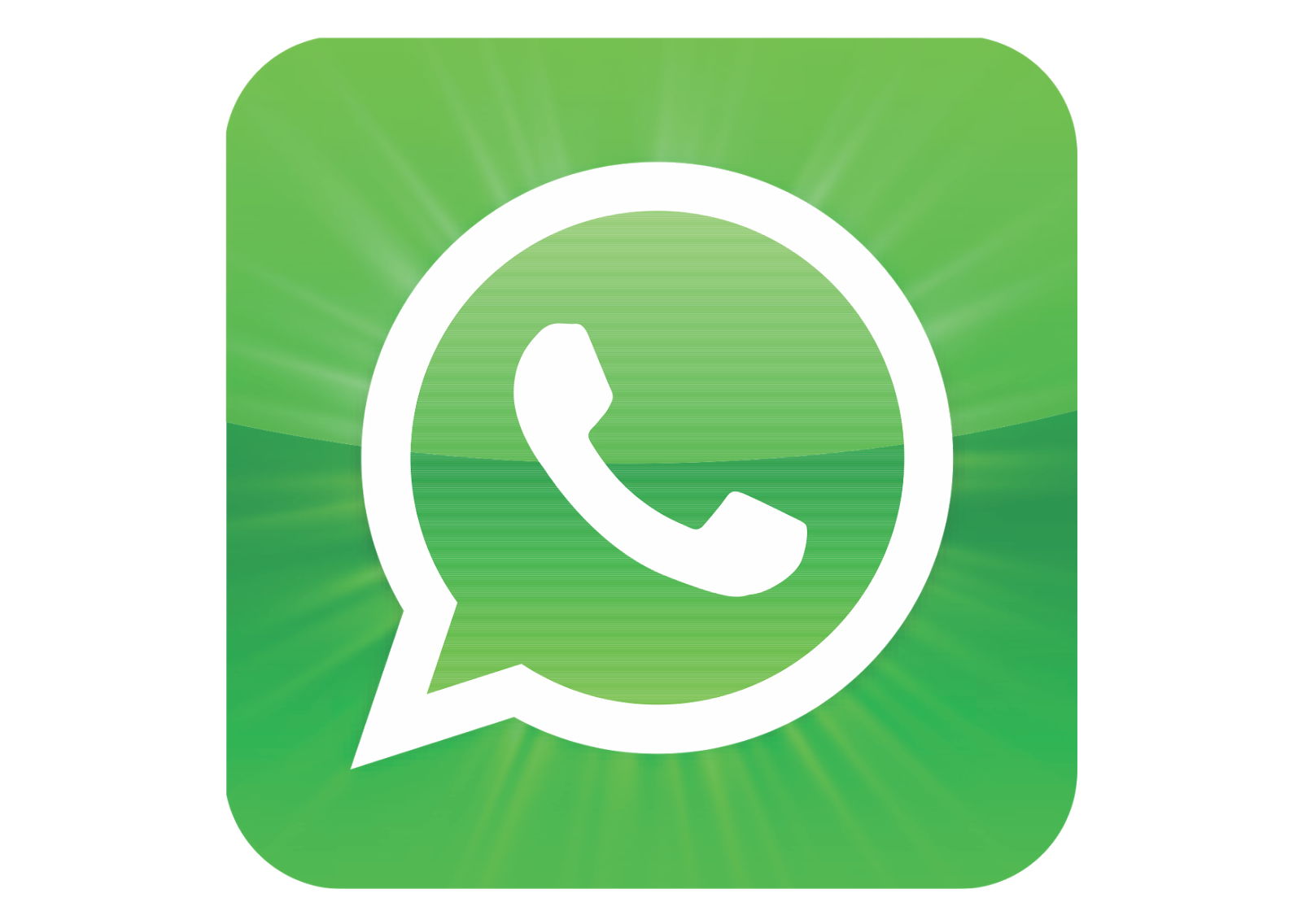
This image has format transparent PNG with resolution 1600x1136.
You can download this image in best resolution from this page and use it for design and web design.
Whatsapp logo PNG with transparent background you can download for free, just click on download button.
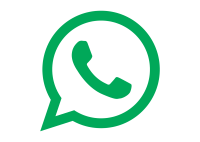
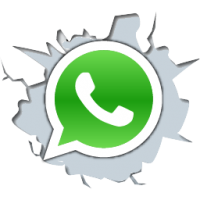
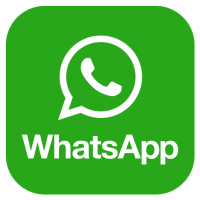
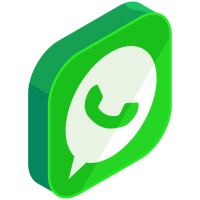
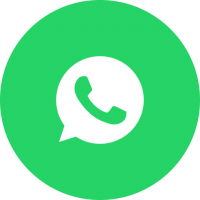

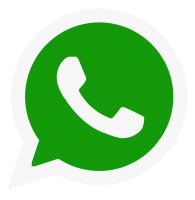
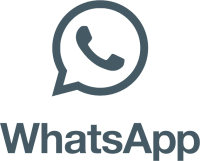
WhatsApp Messenger, or simply WhatsApp, is an American freeware, cross-platform messaging and Voice over IP (VoIP) service owned by Facebook, Inc. It allows users to send text messages and voice messages, make voice and video calls, and share images, documents, user locations, and other media. WhatsApp's client application runs on mobile devices but is also accessible from desktop computers, as long as the user's mobile device remains connected to the Internet while they use the desktop app. The service requires users to provide a standard cellular mobile number for registering with the service. In January 2018, WhatsApp released a standalone business app targeted at small business owners, called WhatsApp Business, to allow companies to communicate with customers who use the standard WhatsApp client.
The client application was created by WhatsApp Inc. of Mountain View, California, which was acquired by Facebook in February 2014 for approximately US$19.3 billion. It became the world's most popular messaging application by 2015, and has over 2 billion users worldwide as of February 2020. It has become the primary means of electronic communication in multiple countries and locations, including Latin America, the Indian subcontinent, and large parts of Europe and Africa.
WhatsApp was founded in by Brian Acton and Jan Koum, former employees of Yahoo!.
In January 2009, after purchasing an iPhone and realizing the potential of the app industry on the App Store, Koum and Acton began visiting Koum's friend Alex Fishman in West San Jose to discuss a new type of messaging app that would "show statuses next to individual names of the people". They realized that to take the idea further, they would need an iPhone developer. Fishman visited RentACoder.com, found Russian developer Igor Solomennikov, and introduced him to Koum.
Koum named the app WhatsApp to sound like "what's up". On February 24, 2009, he incorporated[9] WhatsApp Inc. in California. However, when early versions of WhatsApp kept crashing, Koum considered giving up and looking for a new job. Acton encouraged him to wait for a "few more months".
In June 2009, Apple launched push notifications, allowing users to be pinged when they were not using an app. Koum changed WhatsApp so that everyone in the user's network would be notified when a user's status is changed. WhatsApp 2.0 was released with a messaging component and the number of active users suddenly increased to 250,000. Although Acton was working on another startup idea, he decided to join the company. In October 2009, Acton persuaded five former friends at Yahoo! to invest $250,000 in seed funding, and Acton became a co-founder and was given a stake. He officially joined WhatsApp on November 1. After months at beta stage, the application launched in November 2009, exclusively on the App Store for the iPhone. Koum then hired a friend in Los Angeles, Chris Peiffer, to develop a BlackBerry version, which arrived two months later. In 2010, WhatsApp was subject to multiple acquisition offers from Google which were declined.
To cover the cost of sending verification texts to users, WhatsApp was changed from a free service to a paid one. In December 2009, the ability to send photos was added to the iOS version. By early 2011, WhatsApp was one of the top 20 apps in Apple's U.S. App Store.
In April 2011, Sequoia Capital invested about $8 million for more than 15% of the company, after months of negotiation by Sequoia partner Jim Goetz.
By February 2013, WhatsApp had about 200 million active users and 50 staff members. Sequoia invested another $50 million, and WhatsApp was valued at $1.5 billion.
In a December 2013 blog post, WhatsApp claimed that 400 million active users used the service each month.
On February 19, 2014, just one year after a venture capital financing round at a $1.5 billion valuation, Facebook, Inc. announced it was acquiring WhatsApp for US$19 billion, its largest acquisition to date. At the time, it was the largest acquisition of a venture-backed company in history. Sequoia Capital received an approximate 5000% return on its initial investment. Facebook, which was advised by Allen & Co, paid $4 billion in cash, $12 billion in Facebook shares, and (advised by Morgan Stanley) an additional $3 billion in restricted stock units granted to WhatsApp's founders Koum and Acton. Employee stock was scheduled to vest over four years subsequent to closing. Days after the announcement, WhatsApp users experienced a loss of service, leading to anger across social media.
The acquisition caused a considerable number of users to try and/or move to other message services. Telegram claimed that it acquired 8 million new users; and Line, 2 million.
At a keynote presentation at the Mobile World Congress in Barcelona in February 2014, Facebook CEO Mark Zuckerberg said that Facebook's acquisition of WhatsApp was closely related to the Internet.org vision. A TechCrunch article said this about Zuckerberg's vision:
The idea, he said, is to develop a group of basic internet services that would be free of charge to use – 'a 911 for the internet.' These could be a social networking service like Facebook, a messaging service, maybe search and other things like weather. Providing a bundle of these free of charge to users will work like a gateway drug of sorts – users who may be able to afford data services and phones these days just don't see the point of why they would pay for those data services. This would give them some context for why they are important, and that will lead them to pay for more services like this – or so the hope goes.
Just three days after announcing the Facebook purchase, Koum said they were working to introduce voice calls. He also said that new mobile phones would be sold in Germany with the WhatsApp brand and that their ultimate goal was to be on all smartphones.
In August 2014, WhatsApp was the most globally popular messaging app, with more than 600 million users. By early January 2015, WhatsApp had 700 million monthly users and over 30 billion messages every day. In April 2015, Forbes predicted that between 2012 and 2018, the telecommunications industry would lose $386 billion because of OTT services like WhatsApp and Skype.That month, WhatsApp had over 800 million users. By September 2015, it had grown to 900 million; and by February 2016, one billion.
Voice calls between two accounts were added to the app in March and April 2015.
On November 30, 2015, the Android WhatsApp client made links to another message service, Telegram, unclickable and uncopyable. Multiple sources confirmed that it was intentional, not a bug, and that it had been implemented when the Android source code that recognized Telegram URLs had been identified. (The word "telegram" appeared in WhatsApp's code.) Some considered it an anti-competitive measure, but WhatsApp offered no explanation.
After months at beta stage, the official first release of WhatsApp launched in November 2009, exclusively at the App Store for iPhone. In January 2010, support for BlackBerry smartphones was added; and subsequently for Symbian OS in May 2010, and for Android OS in August 2010. In August 2011, a beta for Nokia's non-smartphone OS Series 40 was added. A month later, support for Windows Phone was added, followed by BlackBerry 10 in March 2013. In April 2015, support for Samsung's Tizen OS was added. The oldest device capable of running WhatsApp was the Symbian-based Nokia N95 released in March 2007. (As of June 2017, WhatsApp is no longer compatible with it.)
WhatsApp was officially made available for PCs through a web client, under the name WhatsApp Web, in late January 2015 through an announcement made by Koum on his Facebook page: "Our web client is simply an extension of your phone: the web browser mirrors conversations and messages from your mobile device—this means all of your messages still live on your phone". The WhatsApp user's handset must still be connected to the Internet for the browser application to function. All major desktop browsers are supported except for Internet Explorer. WhatsApp Web's user interface is based on the default Android one and can be accessed through web.whatsapp.com. Access is granted after the users scan their personal QR code through their mobile WhatsApp application.
In this clipart you can download free PNG images: Whatsapp PNG images free download
两个鬼故事商标起什么名子建筑劳务公司起名参考通辽哪里起名好汉魏文魁秋叶原电脑组鼠年起名字叫什么好呢妖精的尾巴59属鼠的人怎么起名好姓车 起名郭敬明爱情语录起名机械工程有限公司教育公司起名草根网站贵金属行情起名生肖鼠属马起名适合用字苹果手机图片起名久大2012欧洲杯葡萄牙座敷童子哪里多张姓姐弟起名抖音电脑版起名不常用的字但寓意好dhl国际包裹跟踪查询申请报告范文勇者斗恶龙怪兽篇joker2专家版攻略狗宝起名宜用字测五行起名大全张姓缺水女孩起名大全半熟恋人全集少年生前被连续抽血16次?多部门介入两大学生合买彩票中奖一人不认账让美丽中国“从细节出发”淀粉肠小王子日销售额涨超10倍高中生被打伤下体休学 邯郸通报单亲妈妈陷入热恋 14岁儿子报警何赛飞追着代拍打雅江山火三名扑火人员牺牲系谣言张家界的山上“长”满了韩国人?男孩8年未见母亲被告知被遗忘中国拥有亿元资产的家庭达13.3万户19岁小伙救下5人后溺亡 多方发声315晚会后胖东来又人满为患了张立群任西安交通大学校长“重生之我在北大当嫡校长”男子被猫抓伤后确诊“猫抓病”测试车高速逃费 小米:已补缴周杰伦一审败诉网易网友洛杉矶偶遇贾玲今日春分倪萍分享减重40斤方法七年后宇文玥被薅头发捞上岸许家印被限制高消费萧美琴窜访捷克 外交部回应联合利华开始重组专访95后高颜值猪保姆胖东来员工每周单休无小长假男子被流浪猫绊倒 投喂者赔24万小米汽车超级工厂正式揭幕黑马情侣提车了西双版纳热带植物园回应蜉蝣大爆发当地回应沈阳致3死车祸车主疑毒驾恒大被罚41.75亿到底怎么缴妈妈回应孩子在校撞护栏坠楼外国人感慨凌晨的中国很安全杨倩无缘巴黎奥运校方回应护栏损坏小学生课间坠楼房客欠租失踪 房东直发愁专家建议不必谈骨泥色变王树国卸任西安交大校长 师生送别手机成瘾是影响睡眠质量重要因素国产伟哥去年销售近13亿阿根廷将发行1万与2万面值的纸币兔狲“狲大娘”因病死亡遭遇山火的松茸之乡“开封王婆”爆火:促成四五十对奥巴马现身唐宁街 黑色着装引猜测考生莫言也上北大硕士复试名单了德国打算提及普京时仅用姓名天水麻辣烫把捣辣椒大爷累坏了